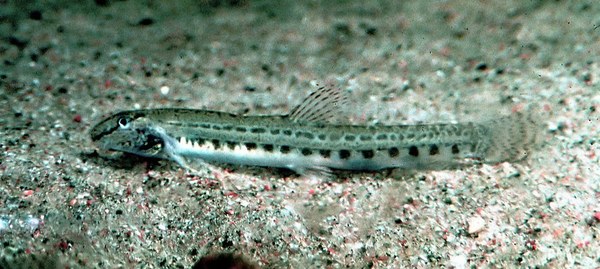Cobitis taenia taenia
Summary
Scientific name: Cobitis taenia taenia (Linnaeus, 1758)
Common name: Spined Loach, Spiny Loach, plus local names over vast range.
Synonyms: Cobitis taenia dalmatina, Cobitis taenia danubialis, Cobitis taenia narentana, Cobitis taenia ohrindana, Cobitis taenioides, Cobitis spilura.
Distribution: Widespread throughout most of Europe and northern Asia, England, but not Scotland or Wales. Iberian peninsula, to northern ussia, southern Scandinavia, Iran, Japan and Taiwan.
Sexual Dimorphism: Males have longer, thicker second ray on pectoral fins, and an enlarged scale at its base.
Maximum size: 5.25 inches (13cm)
Similar to: Other Cobitis.

Care: Lives in slow-moving to still waters over sandy substrates with patches of water plants. The aquarium should aim to match these conditions with good filtration and some flow. Subdued lighting.
This fish's temperature requirements are probably the biggest barrier to successfully keeping the species in home aquaria.
As it's range includes countries that experience very cold winters it needs far colder water than can normally be easily provided in a modern centrally-heated domestic home situation.
Feeding: Will eat most proprietry aquarium foods, but loves live and frozen foods.
Water parameters: pH: 7.0 - 7.7. Hardness: Medium. Max dh:
Temperature: 57.2ºF to 64.4ºF (14-18°C). Colder in Winter.
Breeding: Has been bred in aquaria, but needs very cold over-wintering to induce spawning in warmer conditions. In the wild, the species is a fractional spawner and a female may produce thousands of eggs during a three month spawning season.
Notes
Cobitis taenia taenia and its sub-species are the most successful, widespread species of any Loach in the world. Its range is immense, but mainly restricted to countries that have a proper winter season.
It is a peaceful, largely solitary and nocturnal species that likes to bury itself in the substrate with just the head and tail visible. The fish will sift substrate through the mouth and gills and the translation of the German name for the species is "Stone-biter".
Throughout Europe particularly, the fish is under threat
from dense human population because of stream channelization. Studies have
revealed a delicate balance of needs of the species. A sandy or soft substrate,
clean water and stands of submerged water plants for spawning in. Channeling of
streams and rivers by concrete walls, removal of water plants and other
disturbances have led to serious population decline.
Photo Gallery
Click to view all images of this species! |
|
Document Actions


